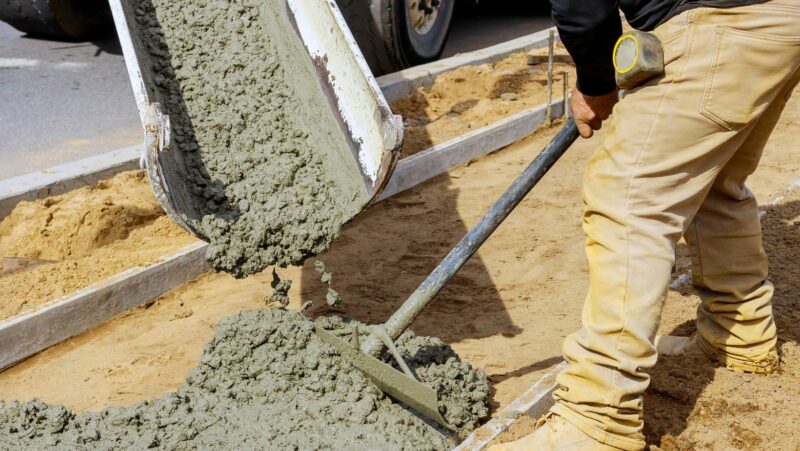
When it comes to constructing a solid and sturdy building, the foundation is the unsung hero that provides stability and support. Over the years, techniques for pouring foundations have evolved, offering more efficient and effective methods. In this guide, we’ll delve deep into modern techniques in foundation pouring, shedding light on the advancements that make construction safer and more efficient.
The Importance of a Solid Foundation
Before we dive into modern techniques, let’s first understand the significance of a robust foundation. The foundation is the bedrock upon which your building stands. It must bear the weight of the entire structure, distribute it evenly, and resist settling or shifting over time. A well-constructed foundation ensures the longevity and stability of your building.
Traditional vs. Modern Foundation Pouring
In the past, foundation pouring involved excavating a trench, constructing wooden forms, and pouring concrete into the trench. While this method has served well for decades, modern construction demands efficiency, speed, and precision.
Modern foundation pouring techniques leverage the latest technology and innovations to streamline the process and enhance the quality of the foundation. Let’s explore some of these advancements:
1. Concrete Pumping
Traditional pouring methods often required workers to manually transport and pour concrete into the foundation trench. This labor-intensive process could be slow and physically demanding.
Modern techniques employ concrete pumps, which use hydraulic power to transport concrete from a mixer truck to the desired location with precision and speed. This not only reduces physical strain on workers but also allows for more efficient pouring and better control of the concrete flow.
2. Reinforcement and Reinforcing Fibers
To increase the strength and durability of foundations, modern techniques often incorporate reinforcement materials like steel rebar and reinforcing fibers. These materials enhance the foundation’s ability to withstand structural stress and prevent cracks and settling over time.

Reinforcing fibers, made of materials like glass or synthetic polymers, are added to the concrete mix. These fibers create a three-dimensional network within the concrete, improving its tensile strength and reducing the likelihood of cracking.
3. Advanced Formwork
Formwork, the molds used to shape and support the concrete until it sets, has also seen significant advancements. Modern formwork systems are often made of lightweight, reusable materials like aluminum or engineered wood.
These systems are designed for efficiency, allowing for quick assembly and disassembly. They also provide precise control over the shape and dimensions of the foundation, ensuring accuracy in construction.
The Tremmie Pipe Technique
One of the most intriguing innovations in modern foundation pouring is the use of tremmie pipes. Tremmie pipes are specially designed pipes or tubes used to place concrete underwater or below ground level. This technique is particularly useful in situations where traditional pouring methods are impractical.
How Tremmie Pipes Work
The tremie pipe technique involves the following steps:
- Insertion: A long, narrow tremmie pipe is inserted vertically into the excavation or borehole where the foundation is to be poured. The pipe is sealed at the bottom to prevent the ingress of water.
- Concrete Pouring: Concrete is poured into the tremmie pipe from the top. The weight of the concrete pushes the water out of the pipe as it sinks to the bottom of the excavation.
- Continuous Pouring: The concrete pouring is continuous, ensuring a seamless foundation without the need for joints or seams. The tremie pipe is slowly lifted as the concrete fills the space.
Advantages of Tremmie Pipe Technique
The tremie pipe technique offers several advantages:
- Reduced Risk of Segregation: Since the concrete is poured from the bottom up, there is minimal risk of segregation, ensuring a homogeneous and strong foundation.
- Minimized Water Contamination: The sealed bottom of the tremmie pipe prevents water from contaminating the concrete mix, maintaining its integrity.
- Suitability for Deep Foundations: Tremmie pipes are ideal for deep foundation pouring, where traditional methods may be impractical or pose safety risks.
Quality Control and Modern Foundation Pouring
Quality control is a critical aspect of modern foundation pouring. Advanced techniques are complemented by rigorous inspection and testing procedures to ensure the foundation meets design specifications and industry standards.
Non-Destructive Testing (NDT)
Non-destructive testing methods, such as ultrasonic testing and ground-penetrating radar, are employed to assess the quality of the foundation without damaging the structure. These tests can detect hidden flaws, voids, or irregularities within the foundation.
Continuous Monitoring
Modern construction often incorporates real-time monitoring systems that track factors like temperature, humidity, and curing time. These systems help ensure the concrete sets properly and achieve the desired strength.

Modern techniques in foundation pouring have revolutionized the construction industry, making the process more efficient, precise, and reliable. From concrete pumping to the innovative use of tremie pipes, these advancements ensure that foundations are not only strong but also durable, standing the test of time.
As technology continues to advance, we can expect further innovations in foundation construction, ultimately leading to even safer and more resilient buildings. By staying informed about these techniques and adopting the best practices, builders can create foundations that provide a solid base for the structures of the future.



